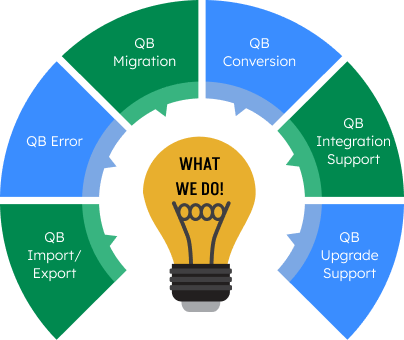Journal Entries help record financial transactions that don’t fit into predefined categories in QuickBooks. They are also used to transfer funds between accounts. When upgrading to QuickBooks, it’s crucial to import Excel journal entries into QuickBooks to maintain accurate records. This guide provides step-by-step instructions on importing data using CSV or Excel files. Before starting, ensure account numbers are turned OFF to avoid import errors. By default, they are OFF and should be re-enabled once the import is complete. This ensures a smooth transition and accurate financial tracking in QuickBooks.
How to Import Excel Journal Entries into QuickBooks?
Step 1: Create your spreadsheet
It will let you check if your data looks organized when presented in a row and column format.
A. Add the required columns:
- Journal No.
- Journal Date
- Account Name
- Debits
- Credits
- Choose the date format
B. In case, you want to have a new account, you can add those before the import process begins.
To add:
- Move to Settings
- Choose Chart of Accounts
- Click New to create the new account
- Choose the account type from the Account Type drop-down
- Choose the detail type from the Detail Type drop-down
- Give a new name to the account created
- Add a description for the created account
- Select Is sub-account if you are adding an account under another account (i.e. parent account)
- Select the date when you start your transactions to be tracked from
- For the Unpaid Balance field, you can enter the amount
- Also, check the as-of-date to start tracking finances from that date
- Choose Save and Close
Step 2: Import the journal entries
- Move to Settings
- Choose Import Data
- Choose Journal Entries. You will get a download page
- Click on Browse
In case you want to format the journal entries, you can first click on Download a sample file to check how it appears.
- Find the CSV or Excel file and select it
- Click Open
- Click Next
- Map the fields
- Click each small arrow icon beside the fields and choose the headers that match the field in QB Online.
- Click Next
If an error is detected, edit the file and map the fields with QB headers again
- Choose Start Import
- Click Done
Once the import process is complete, you can use the search console and find the journal entries you wish to. You may also edit the details if required.
Need Professional Help?
The process is clearly mentioned along with the steps to be followed. However, if you still find difficulty in proceeding with it or you have any queries related to any of the steps mentioned above, our expert representatives are always available to assist you on Phone Call at smbaccountants.com.
Frequently Asked Questions
Q 1: Can I Import Journal entries from Excel to QuickBooks?
Ans: Follow these steps:
- Go to Settings ⚙️, then choose Import Data.
- Select Journal Entries.
- On the Download page, Click Browse.
- Find and choose your CSV or Excel file.
- Map your information.
- Click Next.
- Proceed by selecting Start import.
- Finally, click Done.
Q 2: Can you Import transactions from Excel into QuickBooks?
Ans: Follow these steps:
- Go to the Lists menu, then Choose Chart of Accounts.
- Select the Account drop-down at the bottom, then choose Import from Excel.
- Select Browse to Choose the Excel file you want to import.
- Choose the file, then Click Open.
Q 3: How do I Format Excel to Import to QuickBooks?
Ans: You may observe that the file we’re dealing with is in XLS format. However, QuickBooks requires it to be in CSV format to be usable. Converting the file is quite simple. Just click on File, then Save As, and change the file type to CSV.



